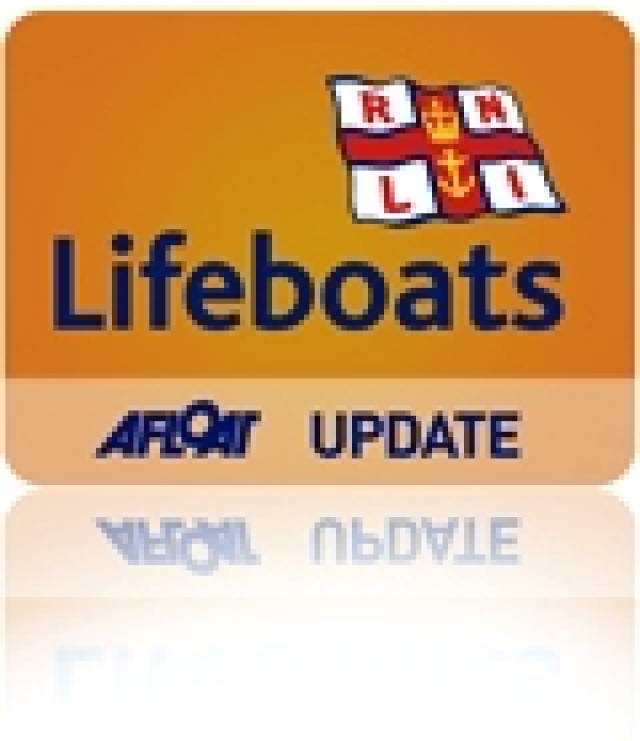On Saturday July 2, Lough Derg RNLI Lifeboat launched, following a request by Valentia Coast Guard, to assist two persons on board a 22ft motor cruiser, that had suffered engine failure and was drifting close to rocks on the Urra shore. The Lifeboat with helm Eleanor Hooker, Ger Egan and Dom Sharkey on board, launched at 19.30hrs. Winds were southwesterly, Force 2. The lifeboat arrived on scene 19.35hrs. The two persons were safe and unharmed and both wearing life-jackets. The vessel was taken under tow, and tied safety alongside at the public harbour at Dromineer at 19.55hrs. The skipper of the vessel thanked the lifeboat crew and said that when he 'saw smoke coming from the engine, he had no option but to cut the power and call for help". He was reassured by the crew that he had done the right thing. The lifeboat returned to station and was ready for service again at 20.20hrs.
At 17.23hrs on Friday July 1, Lough Derg RNLI Lifeboat was requested to launch by Valentia Coast Guard, to assist two persons in difficulty in the water, after their jet ski failed close by the Scilly Islands, at the south-western end of Lough Derg. The Lifeboat with helm Peter Clarke, Eleanor Hooker and Ger Egan on board, launched at 17.35hrs. Soon after launching, the lifeboat was informed that a lakeboat was also going to the assistance of the persons in the water. The lifeboat arrived on scene 17.55hrs. The crew spoke to fishermen in the only lakeboat in the vicinity. The fishermen had no English but conveyed to the crew that they had taken the jet ski and the persons to a landing place on the Tipperary shore. Lifeboat crew searched the Tipperary shoreline indicated by the fishermen, including private harbours, but were unable to locate the jet-skiers or their jet-ski. The Coast Guard were unable to make contact with the person who had called in the request for help. The lifeoboat was stood down at 18.10hrs. The lifeboat returned to station and was ready for service again at 18.40hrs

About The Author
Afloat.ie Team
Afloat.ie is Ireland's dedicated marine journalism team.
Have you got a story for our reporters? Email us here.
We've got a favour to ask
More people are reading Afloat.ie than ever thanks to the power of the internet but we're in stormy seas because advertising revenues across the media are falling fast. Unlike many news sites, we haven't put up a paywall because we want to keep our marine journalism open.
Afloat.ie is Ireland's only full-time marine journalism team and it takes time, money and hard work to produce our content.
So you can see why we need to ask for your help.
If everyone chipped in, we can enhance our coverage and our future would be more secure. You can help us through a small donation. Thank you.





























































